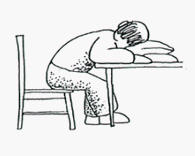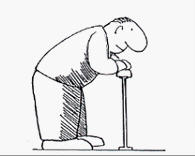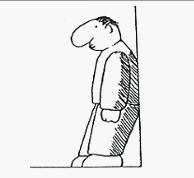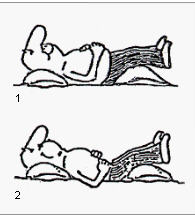COPD – Breathing techniques
If you have COPD, you have to learn to get the most out of your breath.
A great place to learn about breathing techniques is in a respiratory rehabilitation program. Respiratory rehabilitation programs are specially designed for people with COPD. They teach breathing techniques, as well as how to exercise, and they give you a chance to practice with the group. Learn more about respiratory rehabilitation programes, and how to find one in your area.
What to do if you’re short of breath
Being short of breath can feel scary. It helps if you know what to do. If you’re short of breath:
stop and rest in a comfortable position
get your head down
get your shoulders down
breathe in through your nose
blow out through your mouth
breathe in and blow out as fast as is necessary
begin to blow out longer, but not forcibly – use pursed lip breathing if you find it effective
slow your breathing down
begin to breathe through your nose
begin diaphragmatic breathing
stay in this position for 5 minutes longer
 |
 |
 |
 |
Comfortable positions if you’re short of breath
1. Sitting: Sit with your back against the back of the chair. Your head and shoulders should be rolled forward and relaxed downwards. Rest your hands and forearms on your thighs, palms turned upwards. Do not lean on your hands. Your feet should be on the floor, knees rolled slightly outwards. Follow the steps above until your breathing is normal.
2. Sitting: Lean back into the chair in a slouched position, your head rolled forward, shoulders relaxed downward. Rest your hands gently on your stomach. Keep your feet on floor, knees rolled outward. Follow the steps above until your breathing is normal.
3. Sitting: Place a pillow on a table and sit down, arms folded and resting on the pillow. Keep your feet on the floor or a stool, and rest your head on your arms. Follow the steps above until your breathing is normal.
This position may also be used standing, arms resting on kitchen counter or back of chair, not leaning, knees bent slightly, one foot in front of the other.
4. Standing: Lean with your back to the wall, a pole, etc. Place your feet slightly apart and at a comfortable distance from the wall, head and shoulders relaxed. Follow the steps above until your breathing is normal.
How to control your breathing
If you know how to control your breathing, you can stay calm when you’re short of breath. Pursed-lip breathing and diaphragmatic breathing will both help. These breathing methods prevent or reduce the trapped air in your lungs, and allow you to breathe in more fresh air.
Pursed Lip Breathing
breathe in slowly through your nose for 1 count
purse your lips as if you were going to whistle
breathe out gently through pursed lips for 2 slow counts (breathe out twice as slowly as you breathed in). Let the air escape naturally- don’t force the air out of your lungs
keep doing pursed lip breathing until you’re not short of breath
Diaphragmatic Breathing
put one hand on your upper chest, and the other on your belly just above your waist
breathe in slowly through your nose – you should be able to feel the hand on
your belly moving out (the hand on your chest shouldn’t move)
breathe out slowly through your pursed lips – you should be able to feel the
hand on your belly moving in as you exhale (breathe out)
Cough up phlegm: controlled coughing
People with COPD usually have extra phlegm (mucus) in their lungs. If you have phlegm, cough it up. If the phlegm stays in your lungs, it can clog your smaller airways, making it hard to breathe. The phlegm could also become infected. It’s important to get the phlegm out.
Controlled coughing helps you clear the phlegm from your lungs. Here’s how to do it:
Sit down, Make yourself comfortable.
Lean your head forward slightly.
Place both feet firmly on the ground.
Inhale deeply using diaphragmatic technique (push your abdomen out while inhaling).
Try to hold your breath for three seconds.
While keeping your mouth slightly open, cough out twice. You should feel your diaphragm pushed upward while you do this. The second cough is to move the phlegm towards the throat after you have moved it with your first cough.
Spit the phlegm out into a tissue. Remember to check the colour; if the phlegm is yellow, green or brown, or has blood in it, call your doctor. Discard the tissue.
